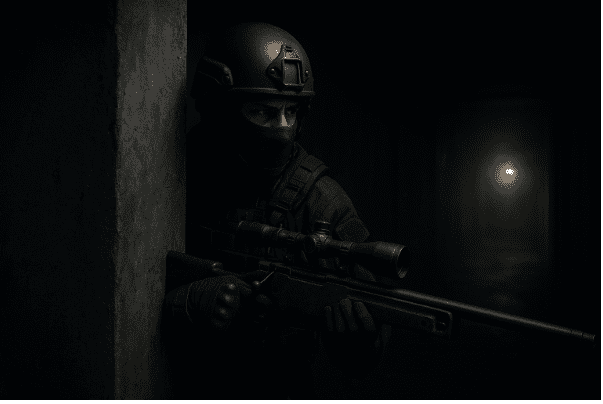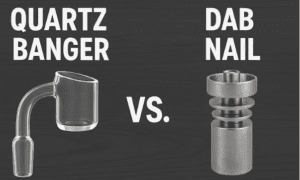Let’s be honest with ourselves for a minute. We’ve all been there. You’re having an off night in CS2. Your shots are whiffing, your timing is garbage, and you’re pretty sure the enemy team has a sixth sense for where you are at all times. In a fit of desperation, you switch up your loadout. Not your strategy, not your positioning. Your skins. You swap that factory-new whatever for the beat-up, battle-scarred rifle that got you that one clutch ace six months ago. And suddenly… things start clicking. It’s nonsense. It’s illogical. It’s pure superstition. But in the high-stakes, pixel-perfect world of Counter-Strike, we’ll take any edge we can get. It’s why the dream of unboxing something like a perfect AWP Boom isn’t just about the cash value; it’s about catching lightning in a bottle, owning a piece of randomized code that just feels destined for greatness.
Our Brains Are Lying To Us, and We Love It
Here’s the thing about the human brain: it’s a pattern-seeking machine on overdrive. It’s a leftover feature from our caveman days, when spotting a pattern in the grass could mean the difference between finding dinner and becoming dinner. This little quirk is called apophenia—the tendency to see meaningful connections in totally random stuff. It’s why you see a face in a burnt piece of toast or a dog in the clouds.
And in CS2? It’s running rampant.
You get a new skin. The first game you use it, you drop 30 kills and hit a nasty one-tap through a smoke. That’s it. Your brain, in its infinite, pattern-hungry wisdom, forges a link: This skin = headshots. It’s not a conscious decision. It’s a deep-seated, instinctual thing. The next time you equip it, you’re carrying that little jolt of remembered success. It’s a feedback loop. A digital good luck charm. We know, on a rational level, that the pattern index has zero effect on the game’s code. But the part of our brain that gets a dopamine hit from a sick play doesn’t care about logic. It just knows what felt good.
The Cult of the Blue Gem and Other Shiny Things
You can’t talk about this stuff without kneeling at the altar of the Case Hardened finish. Specifically, the “Blue Gem.” For the uninitiated, the Case Hardened pattern is a randomized mess of gold, purple, and blue splotches meant to look like color case-hardened steel. Most of them look like a rusty, oily mess.
But sometimes—very, very rarely—the random texture application lands in such a way that the entire visible surface of the weapon is coated in that vibrant, hypnotic blue. That’s a Blue Gem. And it’s the closest thing this community has to a holy relic. We’re talking about items that have sold for hundreds of thousands, even millions, of dollars. An AK-47 with a specific pattern is a legend. A Karambit knife with a perfect blue sheen is a myth. It’s the absolute peak of this pattern-obsession, a collective agreement that this one random outcome is the most desirable thing in the entire game.
It’s not just the blues, though. The obsession branches out. Doppler knives have their own hierarchy. A standard Doppler is nice, sure. But then you have the “gem” patterns—the pure Ruby, the deep Sapphire, and the void-like Black Pearl. These are solid-color versions that are astronomically rarer. Then you get into the real niche stuff. The percentage of fade on a Marble Fade or Fade skin. The placement of the web on a Crimson Web knife. Some people who are looking to buy CS2 skins will even hunt for specific patterns on cheap skins, like the AWP | PAW, hoping to find one with the “golden cat” perfectly centered. It’s a rabbit hole of perceived value that turns the CS2 skins market into a treasure hunt.
How We Decide What’s “Lucky” – The Hype Machine
Here’s the secret: a pattern isn’t lucky in a vacuum. It becomes lucky because we, the community, decide it is. It’s a group hallucination we’ve all agreed to participate in. And the engine of that hallucination? Streamers, YouTubers, and pro players.
Think about it. You see Oleksandr “s1mple” Kostyliev, arguably the GOAT, using a specific skin. He hits some impossible shots with it. Suddenly, that skin isn’t just a skin anymore. It’s the s1mple skin. It has an aura. The demand for it skyrockets. Content creators make videos titled “TOP 10 LUCKIEST PATTERNS IN CS2,” and those videos get millions of views. Reddit threads pop up with people showing off their “god-tier” pattern unboxings.
This is how myths are born in the digital age. It’s a decentralized, grassroots process of assigning value. It’s not Valve telling us what’s rare (beyond the initial odds); it’s us telling each other. This collective hype is what fuels the entire high-tier market. The insane CSGO skin prices you see for certain patterns aren’t based on anything tangible; they’re based on a story. A story that we all keep telling.
The Confidence Game: Believing Makes It So?
So, the big question. Does a lucky skin actually make you play better? No. And yes.
No, the code doesn’t change. A Blue Gem AK-47 fires the same bullets at the same speed as a default AK. But yes, your mindset can absolutely change. This is the placebo effect in full force.
If you genuinely believe you have a “lucky” skin, you might play with more confidence. Confidence in a game like CS2 is everything. It’s the difference between hesitating for a millisecond and getting shot, or swinging out and taking the fight. It’s the belief that you’re going to win the duel before it even starts. Your lucky skin is a mental anchor. It’s a trigger that puts you in that confident headspace. You’re not just playing; you’re playing with your special gun that’s blessed by the CS gods. It sounds ridiculous when you say it out loud, but in the heat of a competitive match, that little mental edge can be the deciding factor. The skin isn’t hitting the shots; the confidence it gives you is.
From Pixels to Paychecks: The Economics of Superstition
This entire web of belief and superstition has a massive, real-world impact. It has created a complex and often ludicrous economy. When someone decides to sell CSGO skins, they’re not just listing an item; they might be listing a lottery ticket. The process to sell CS2 skins has evolved; sellers now include pattern indexes and screenshots from every angle to prove their item is one of the “good ones.“
You can see this reflected everywhere. Listings for CSGO skins for sale will have massive price disparities for the same item in the same condition, purely based on the pattern. This obsession even influences CS2 case prices, as the “dream unbox” is no longer just any knife, but a specific, highly-coveted pattern of that knife. It’s why people pour money into a CSGO case opening simulator, just to get a taste of that thrill. They’re chasing the dragon, hoping to hit that one-in-a-billion roll that lands them a legendary pattern.
At the end of the day, the world of CSGO AWP skins and CS2 AWP skins, and all the other finishes in the game, is a beautiful case study in human psychology. We’ve taken a purely cosmetic system and imbued it with meaning, belief, and an absurd amount of value. It’s illogical, irrational, and frankly, a little bit silly. And it’s one of the most fascinating things about the game. We’re not just trading pixels; we’re trading stories, luck, and the intangible magic of collective belief.

































